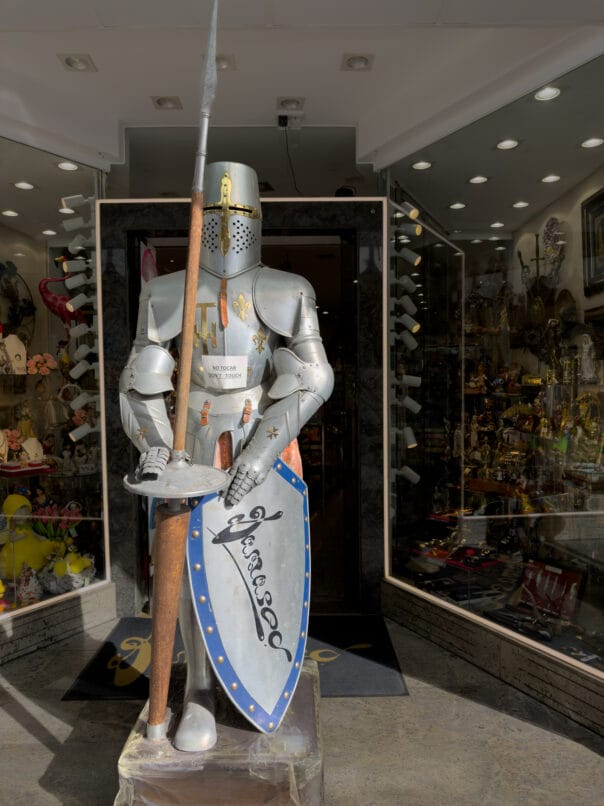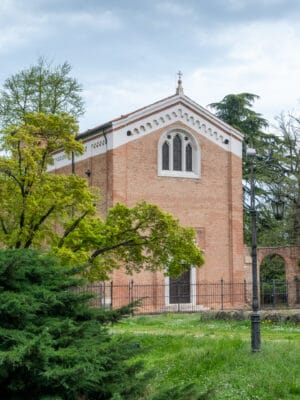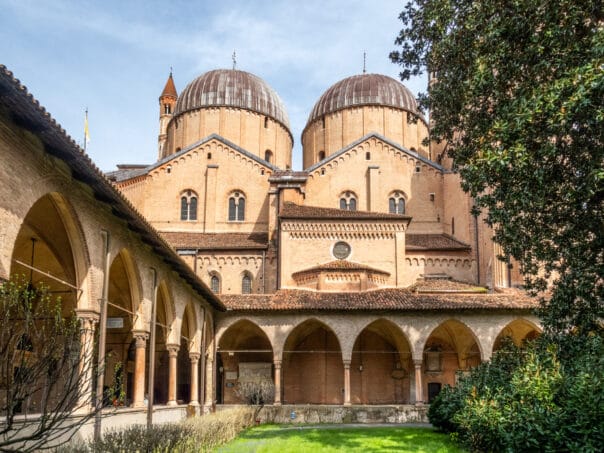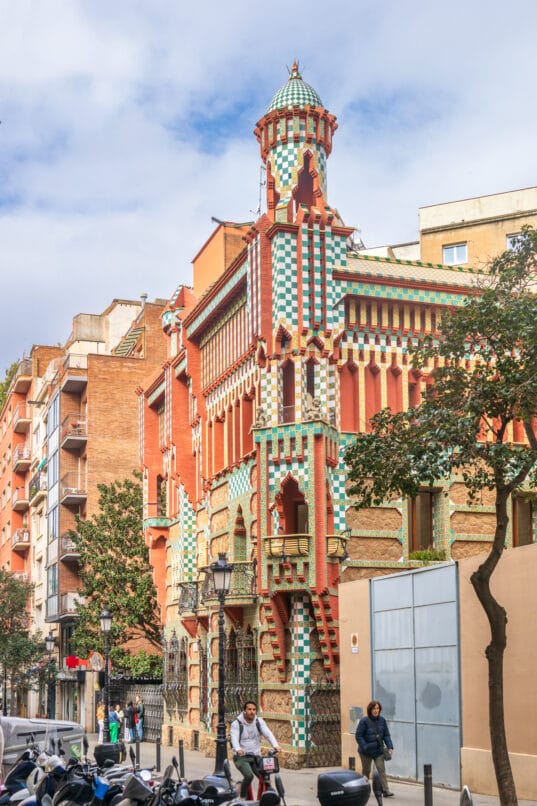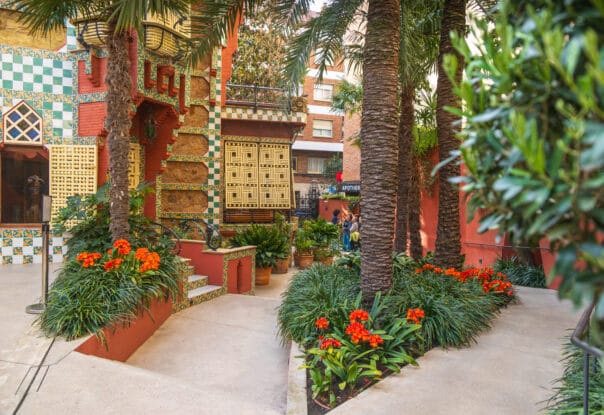Just 30 minutes from Madrid, historic Toledo feels like stepping back into medieval Spain. With two nights to explore the tiny town, my travel buddy and I discovered soaring cathedrals, stone bridges, ancient streets, and unforgettable scenic hilltop views. This city makes a photographer’s paradise at any time of the day. (So, yes. I probably added too many photos to this blog post.)
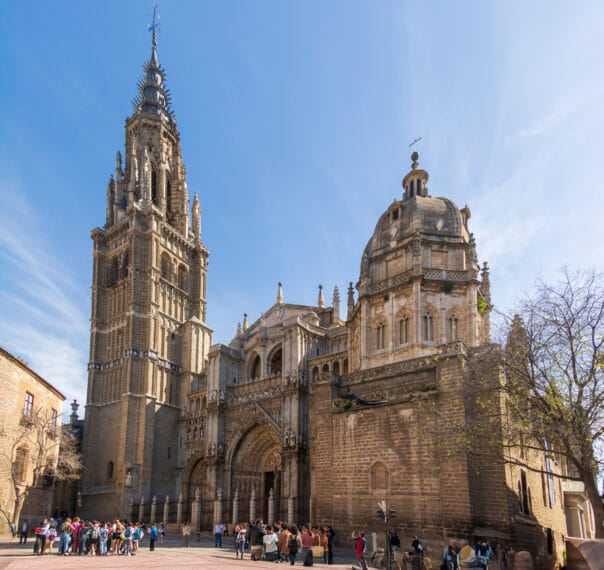
Arrival by Train: A Grand Entrance
Our journey began aboard the AVE high-speed train from Madrid (just 30 minutes). We arrived at Toledo’s gorgeous Mudéjar-style station, a blend of Islamic (Moorish) artistic traditions with Christian Gothic, Romanesque, and later Renaissance elements. From the moment you step off the train you are greeted by arched windows, decorative tiles, and a high clock tower. I immediately fell under the spell of medieval Toledo.
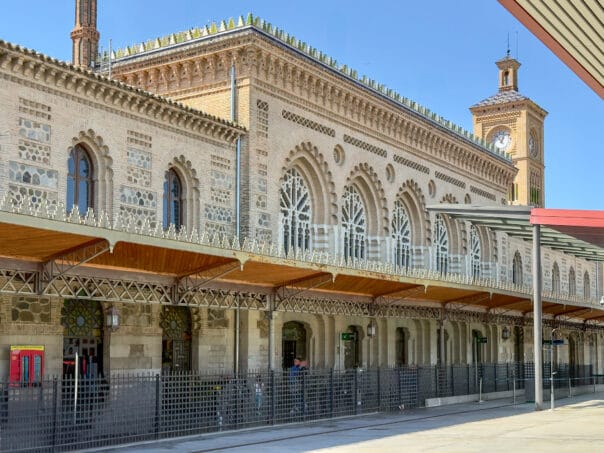
📍 Getting there tip: Book AVE tickets early for the best prices.
First impressions
A short taxi ride brought us into Toledo’s old town, a tangled web of very narrow cobbled lanes perched above the Tagus River. The streets are so tight that many cars must pull in their side-view mirrors.
We checked into Hotel Santa Isabel, housed in a 15th-century nobleman’s home featuring preserved architecture, exposed wooden ceilings, balconies, and a panoramic rooftop terrace with views of the cathedral- but very affordable. No sooner did we drop our bags, then we went to check out the terrace views. They are incredibly wonderful, and the terrace makes an ideal spot for an afternoon drink.
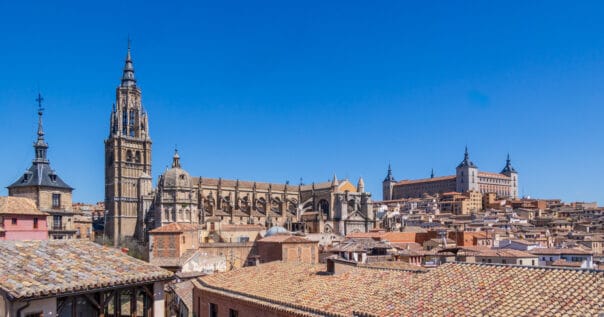
The hotel lies just steps from the cathedral in Plaza del Ayuntamiento, a stately square framed by City Hall and the Archbishop’s Palace. We wandered through the medieval streets, stumbling upon religious statuary, quiet courtyards, and artisan shops. What we didn’t find as easily as expected, was the entrance to the cathedral
We finally managed to secure tickets and the audio guide, though both were a challenge, but worth it. Officially the Primate Cathedral of Saint Mary of Toledo is one of Spain’s most magnificent and second largest churches. It opens with a soaring Gothic nave. The main altar, made from wood and covered in gold leaf, is an explosion of symbolism. We listened for maybe ten minutes to the audio guide reveal the story behind the tiered details.
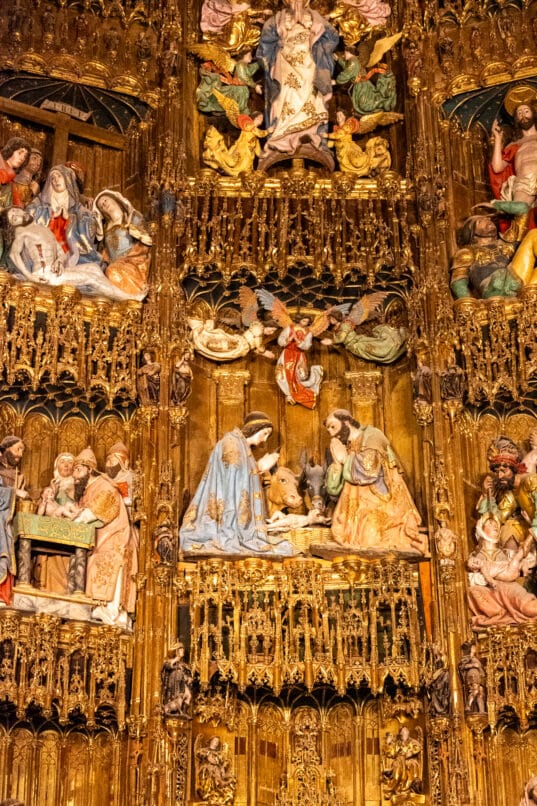
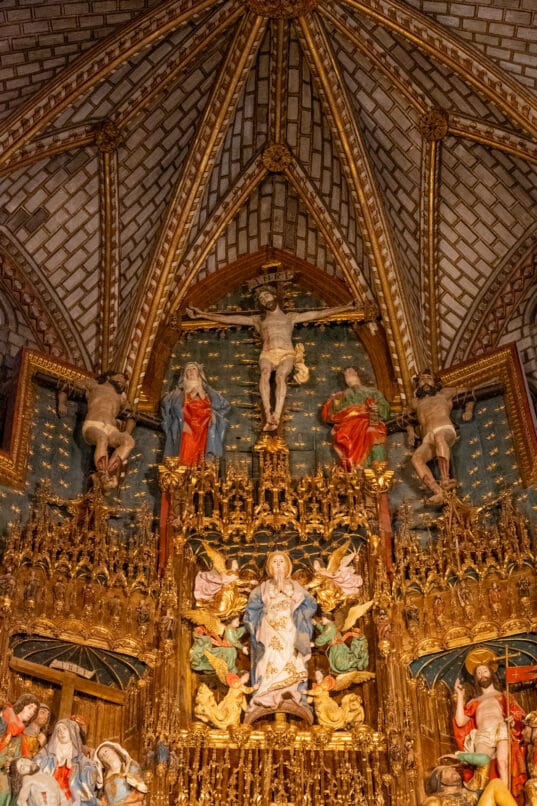
We moved on to the overwhelming white marble baroque style altar with an amazing oculus that was cut into the ceiling to allow natural sunlight in. To my surprise this addition was created between 1729-1732 by Narciso Tomé and his four sons (two architects, one painter, and one sculptor). As you can see in the photo, the oculus includes sculpture and paintings.
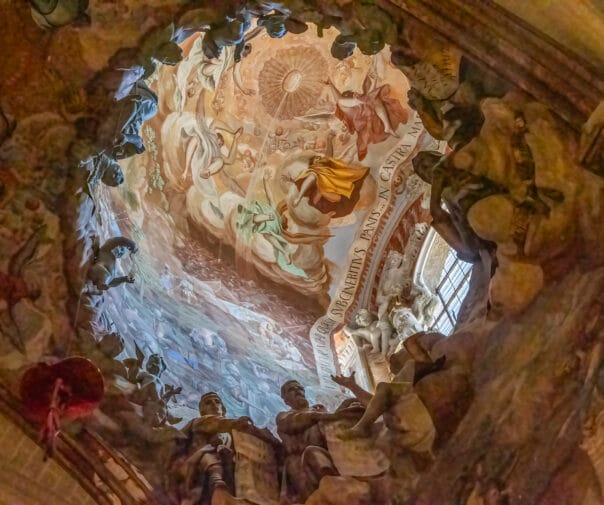
We meandered into a vibrant chapter room and then a grand hall full of El Greco masterpieces. El Greco (1541–1614), was a master painter, sculptor, and architect known for his dramatic, elongated figures and expressive use of color. He lived much of his life in Toledo.
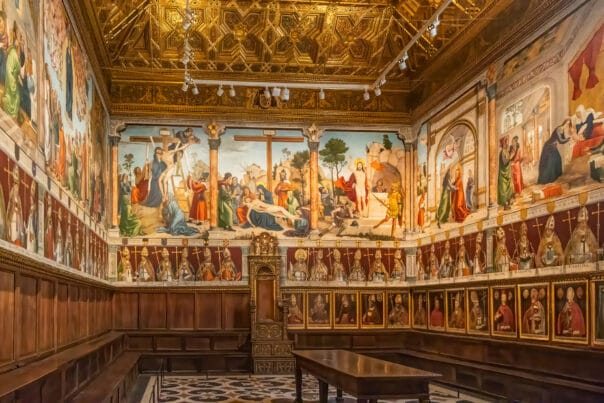
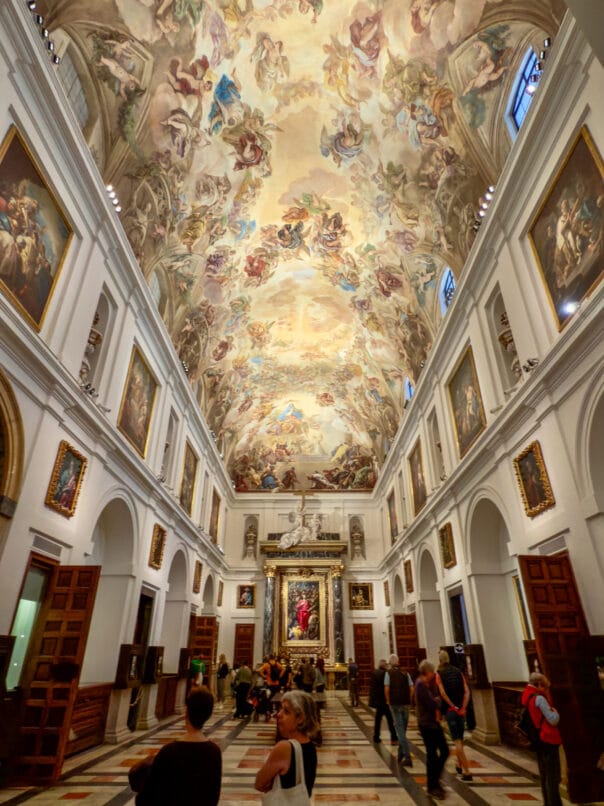
We spent about two and a half hours inside also seeing the intricate choir stalls and the shimmering gold Monstrance of Arfe, created from 1515-1523. The towering gem stands over 10 feet tall and is crafted from over 77 pounds of silver and gold, much of it believed to come from the first shipment of precious metals brought from the New World.
The work is a two-tiered Gothic temple, richly decorated with spires, pinnacles, columns, and intricate figures of saints and angels. The entire structure holds the consecrated Host during the feast of Corpus Christi, when it is carried through the streets of Toledo in a grand procession. A tradition that continues today. It remains one of the finest examples of Spanish ecclesiastical goldsmithing and a symbol of the city’s religious and artistic heritage.
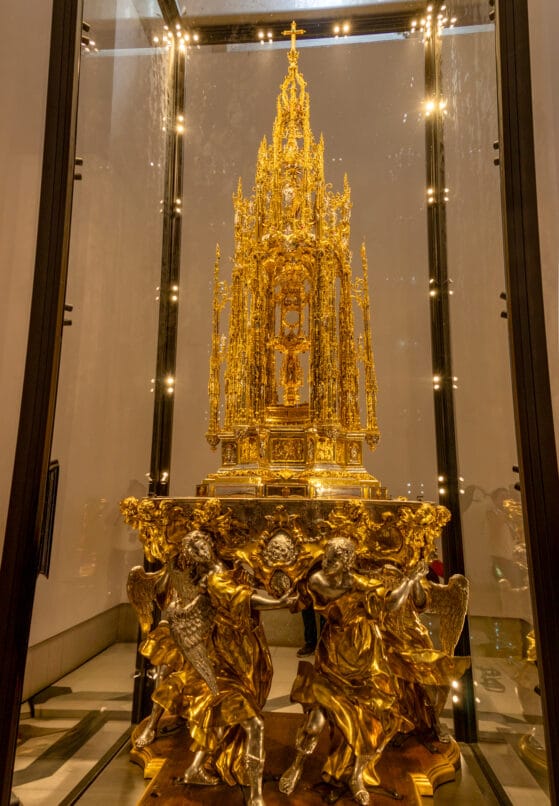
Overwhelmed by all we this art and architecture in the cathedral, we stopped for a drink and then returned to our room for a short rest. Dinner in Spain is always late (compared to American meal times), however we enjoyed some early dining at La Taberna Asturiana Zapico. Afterward, I managed to capture photos of the late sunset from the hotel terrace.
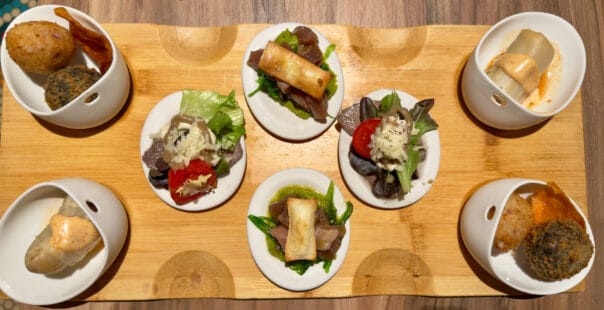
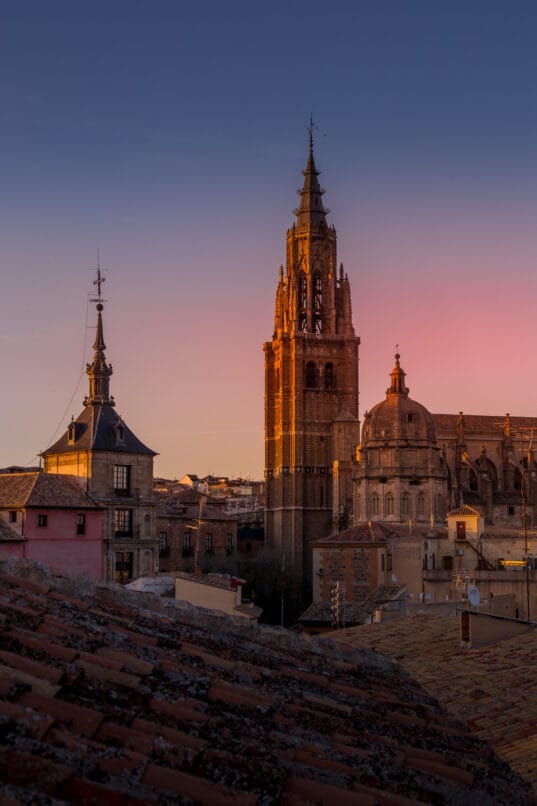
Toledo’s Crown Jewels
The next day we signed up for a guided tour that included a bracelet for entry to seven sites. We met our guide at Zocodover Square, the lively central business plaza that once served as a bustling market. Here we saw the exterior of the Alcázar, a fortress that has seen Roman, Moorish, and Spanish military history. Now it’s home to the Army Museum, but we chose to skip the military fortress.
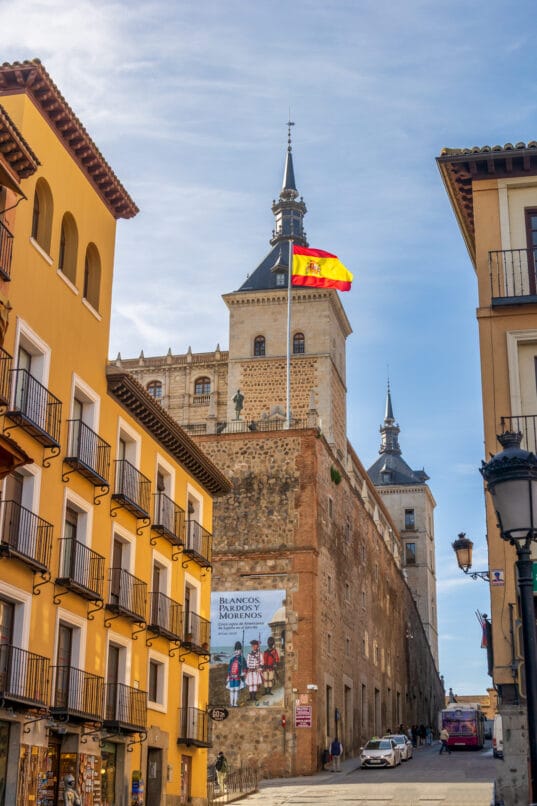
Our guide began by explaining why this city was known as the “City of Three Cultures,” a place where Christian, Muslim, and Jewish influences interwove to create something uniquely Spanish. In 1986, Toledo was declared a UNESCO World Heritage site. The UNESCO World Heritage website states, “Toledo is the repository of more than 2,000 years of history.” This stems from the fact that it was an important city first to the Romans, then to the Visigoths, then the Emirate of Cordoba, then the Christian kingdoms who opposed the Moors and made it an imperial city for a time.
Monastery of San Juan de los Reyes.
We then walked across the historic district, past the cathedral, several alleyways, and up to an overlook area in the former Jewish Quarter. We went on into the Monastery of San Juan de los Reyes.
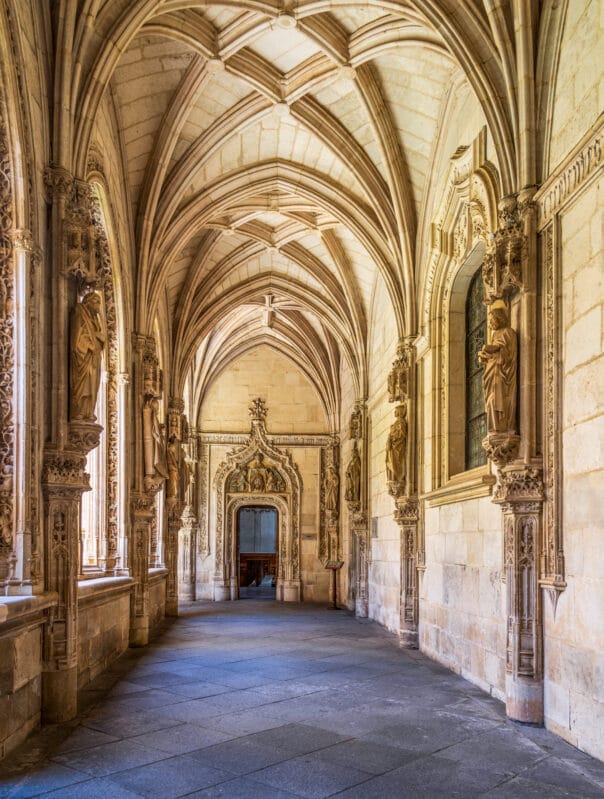
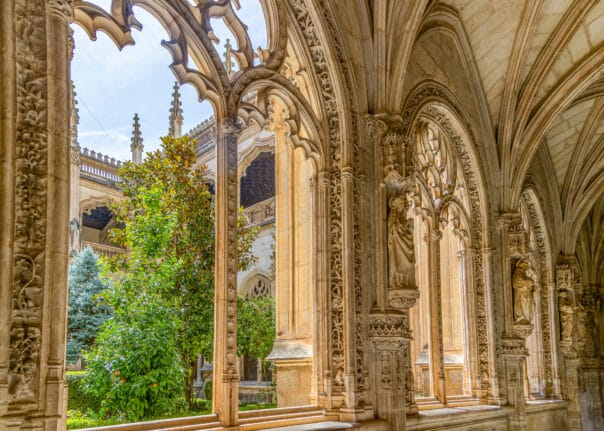
This beautiful church was begun in 1477 by the Catholic Monarchs Ferdinand and Isabella to be their final resting place. However, they later chose to be buried in Granada, after the Reconquista. The monastery’s design is considered to be a masterpiece of Spanish Gothic architecture and I loved the delicate stone detail and the two-storied cloister. I found this site a peaceful place.
Synagogue of Santa María la Blanca
Next we stopped in at the Synagogue of Santa María la Blanca, a building with an unusual history. The Synagogue tells a complex story of faith and cultural exchange. Built in 1180, it is considered one of the oldest surviving synagogues in Europe, yet its architecture is distinctly Mudejar, crafted by Muslim artisans under Christian rule for the Jewish community—another example of the city’s coexistence of three faiths.
Inside, rows of graceful white stone horseshoe arches supported by octagonal pillars create a mesmerizing effect. The interior appears more of a mosque than a typical synagogue. But in the 15th century, the building was converted into a church, renamed in honor of the Virgin Mary, reflecting the religious upheaval and eventual expulsion of Jews from Spain in 1492. Today, Santa María la Blanca highlights the shifting story of Spanish history.
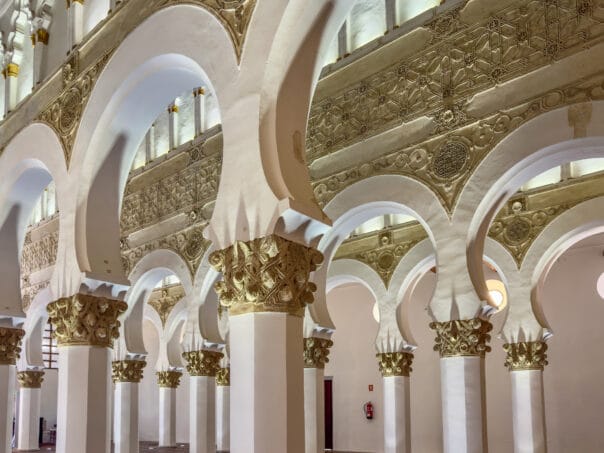
Church of Santo Tomé
Our guide next led us into the modest Church of Santo Tomé, where one of Spain’s greatest artistic treasures awaits—El Greco’s masterpiece, The Burial of the Count of Orgaz. Tucked into a side chapel of this 14th-century church, the immense canvas captures a legendary miracle said to have occurred in 1323, when Saints Stephen and Augustine descended from heaven to bury the devout nobleman Don Gonzalo Ruiz de Toledo. El Greco’s vivid, swirling composition masterfully blends a heavenly vision with earthly realism. It contains portraits of Toledo’s elite—possibly including the artist himself—painted alongside angels and saints.
I’d heard about the painting in art history class, but seeing it in person makes a huge difference. It’s a stunning beauty with vivid colors and fine brush strokes with intricate details. This is a piece of art that could be studied for hours. Do not miss it if you get to Toledo.
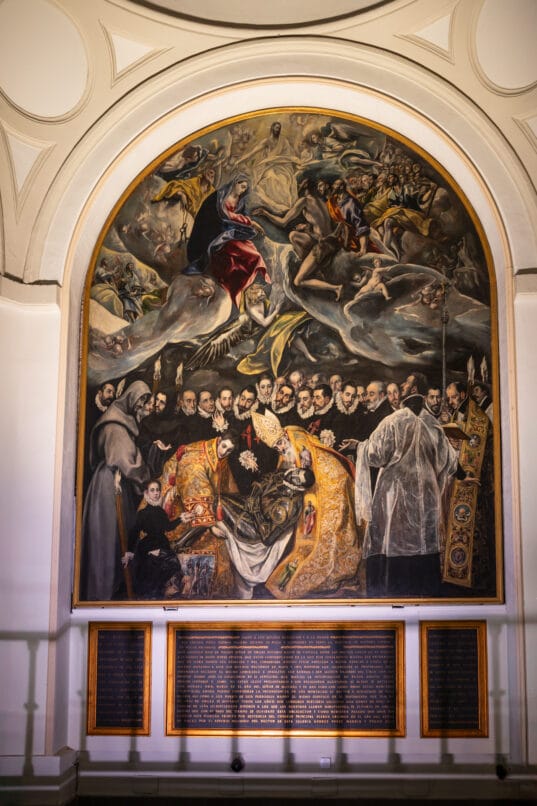
Our tour ended there, so Judy and I stopped for lunch. On the way back to our hotel, we decided to go into Church of El Salvador, more an archeological site with pillars and Roman mosaics.
Church of the Jesuits
We then went on to the Church of the Jesuits to climb its twin towers for city views, as recommended by our guide.
Rising proudly above Toledo’s skyline, the twin towers of the Iglesia de San Ildefonso, also known as the Jesuit Church, offer one of the most spectacular panoramic views of the city. Built between the 17th and 18th centuries in honor of San Ildefonso, Toledo’s patron saint. This grand Baroque-style church is often overlooked by tourists rushing to the cathedral. (This is why you need two days.)
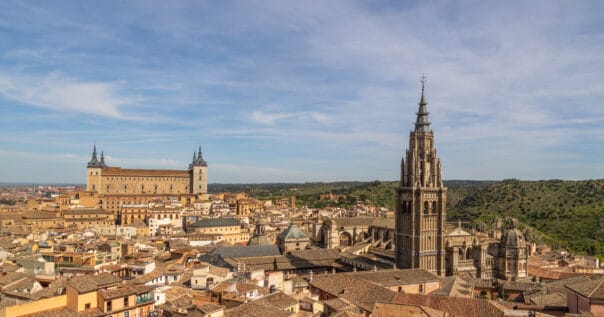
Inside, visitors are treated to elegant chapels, richly adorned altarpieces, and soaring vaulted ceilings.The real highlight, however, is the climb to the top. A series of winding stairs leads to an enclosed view. Then step onto the open-air terrace between the towers, where you’re rewarded with a sweeping panorama of Toledo’s tiled rooftops, the majestic Alcázar, the Cathedral spire, and the winding Tagus River.
We ran out of time and did not visit Mosque of Cristo de la Luz or the Royal College of Noble Maidens. More sadly, we missed the small, but I understand impressive, El Greco Museum. As a avid photographer, I needed more time to get down and photograph the stone bridges and city gates.
🧭 Tips for Using the Bracelet:
- Where to buy: Any of the 7 included sites
- How to use: Wear the bracelet for entry—no need to carry tickets
- Time needed: One full day to leisurely visit all sites, though many split it into two days
- Best order: Start with Santo Tomé and San Juan de los Reyes
Parador de Toledo: A Farewell Dinner with a View
For a special treat, we hired a taxi to take us up the Parador de Toledo on the “Hill of the Emperor.” The hotel terrace overlooks the entire city—cathedral, river, and rooftops glowing at golden hour. It’s the perfect WOW vantage point to appreciate the city’s layered history and to pause for a photo high above the medieval maze.
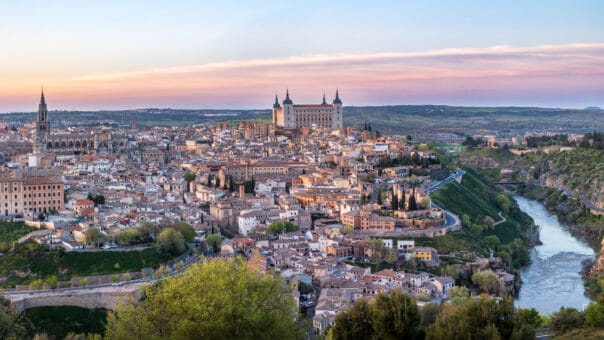
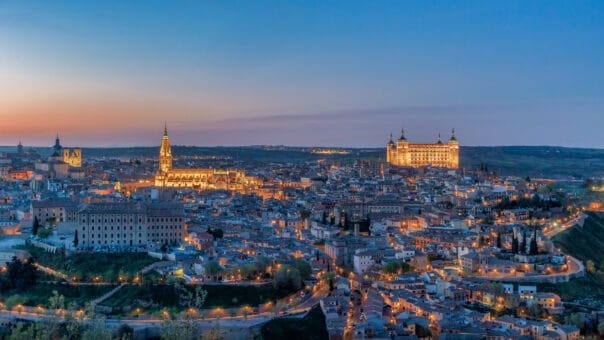
Regional cuisine—grilled fish, venison in red wine sauce, and a bold Tempranillo wine—made the perfect finale to our hilltop escape. We skipped the local dessert specialty, almondy marzipan, as neither of us are fans. We asked our return taxi driver to drop us at the Cathedral Plaza, so we could capture nighttime views and reflections. One of the best reasons to spend a night in Toledo is the absence of crowds. When all the day-trippers leave, the city becomes even more magical.
🍷 Tip: Make dinner reservations in advance.
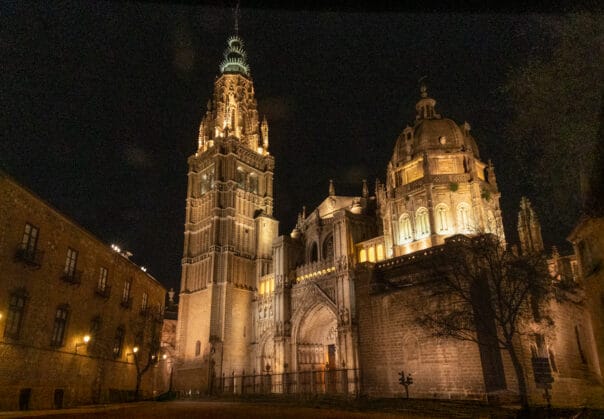
Final Thoughts
Although, we spent two nights in Toledo, we really had only a day and a half to tour as we arrived on a one o’clock train. The hours wizzed by too fast. The city offers a feast for the curious soul. I left longing to return—with even more time to wander its winding lanes.
I’d recommend three nights for photographers, if possible. That would allow for a leisurely exploration of the town and some time to shoot the amazing skyline from different locations.
Tips for Shoppers: Toledo is world-famous for damascene metalwork (gold inlay into steel) and sword making. Many shops offer affordable damascene jewelry and miniature swords, perfect souvenirs.
